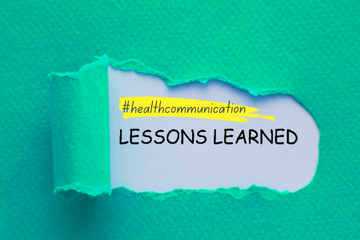Lessons learned: Framing health messages on TikTok

You’re reading Lessons Learned, which distills practical takeaways from standout campaigns and peer-reviewed research in health and science communication. Want more Lessons Learned? Subscribe to our Call to Action newsletter.
A new study explored how health content on TikTok is commonly framed. The researchers analyzed 400 health videos from TikTok’s EduTok campaign using content coding and common framing constructs. They published their findings in the Journal of Health Communication (2023 DOI: 10.1080/21670811.2023.2218454).
What they learned: Most of the videos the team analyzed were about mental health, diet, exercise, and sexual health. Those with the greatest reach and engagement ones featured appeals from role models: for example, influential creators sharing their exercise or diet routines. Videos designed to shock or scare people from engaging in some sort of behavior also performed well. But both types fell short of giving TikTok viewers practical tips for making real changes.
Why it matters: Young people are increasingly looking to social platforms such as TikTok to seek and share health information. But the quality of that information and its ability to inspire positive behavior change is variable, leaving public health communicators with a lot to do.
➡️ Idea worth stealing: “One strategy we would recommend is to have health professionals find ways to share people’s authentic stories while also providing credible and reliable information,” said lead author Nicole O’Donnell of Washington State University.
What to watch: The researchers are now studying what might make mental health videos more engaging, given that mental health videos appeared the least engaging in their data set despite being the most frequently covered health topic in EduTok.


